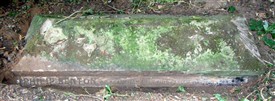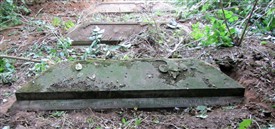Phillip Benton

Phillip Benton's Grave
Mave Sipple & Richard Kirton

Mave Sipple & Richard Kirton
Local Historian
By Mave Sipple
Phillip Benton was the third of six children, born to Samuel and Charlotte (nee Sawell). Phillip was born in 1815 and the family lived at North Shoebury Hall.
When he was 22, he acquired an estate of 28 acres in Little Wakering
In 1843, he married Eliza Squires. The couple lived in Beauchamps, Shopland and had eight children.
After 23 years at Beauchamps they moved to Little Wakering Hall, as tenants of Sir John Tyrell.
Benton‘s passion was local history, and he roamed the countryside collecting information about the villages, farms, and people. By 1876, the first instalment of The History of the Rochford Hundred was published by Arthur Harrington, chemist and shop owner. It was printed by Jabez Francis of Rochford.
The history was written alphabetically beginning with Ashingdon and was a detailed description of the churches, people and landmarks of all the towns and villages in the Rochford Hundred.
Phillip’s work has been a valuable source of information for local historians. Without his books, our knowledge of the area would be greatly reduced and for this we owe him a debt of gratitude.
Benton’s mother died in 1874 and was buried in the church yard in North Shoebury. The same year, his wife died and she was buried in Shopland.
Four years later, Phillip married Elizabeth Warren and the couple moved to Shoebury Hall.
Phillip became ill and very frail, and he moved to Victoria Villa in Whitegate Road, Southend. He died in 1898, aged 83, and is buried in Shopland.
We visited the site of Benton’s grave; many of Benton’s family are buried in a family grave adjacent to Phillip and his two wives.